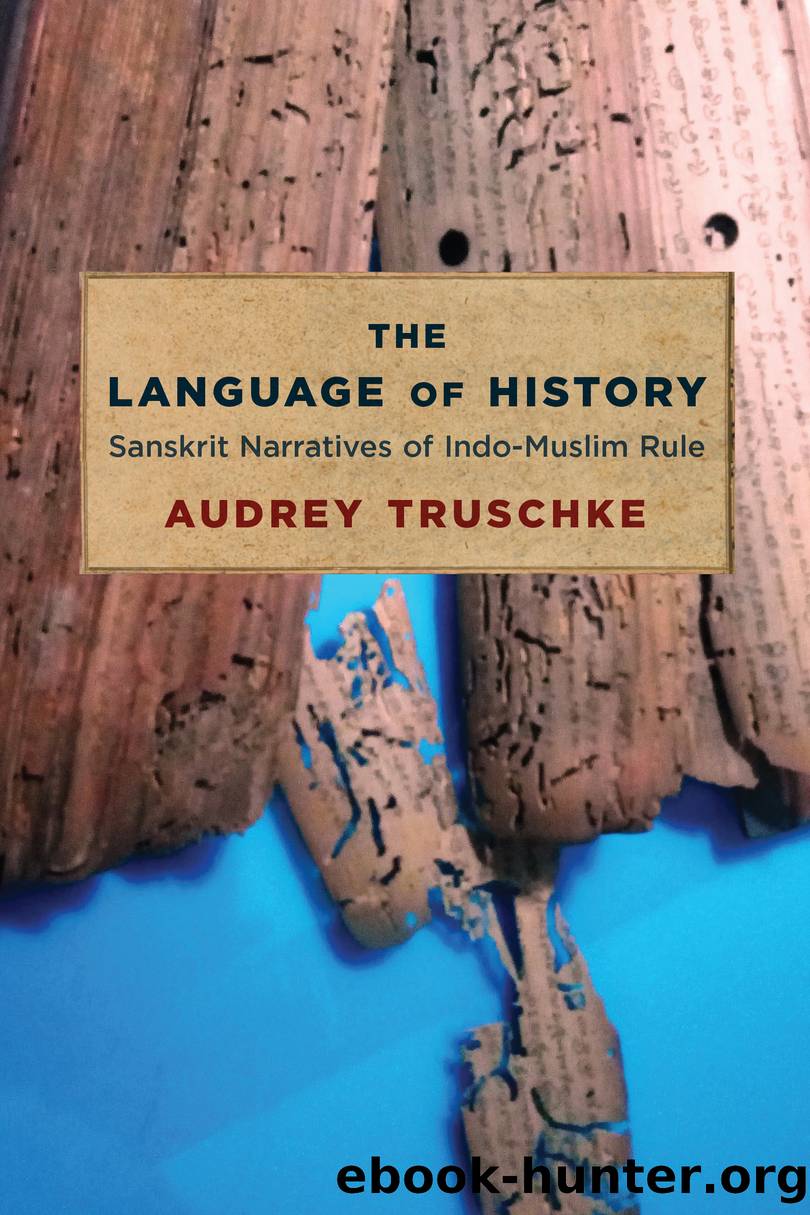The Language of History by Audrey Truschke;

Author:Audrey Truschke;
Language: eng
Format: epub
Publisher: Lightning Source Inc. (Tier 3)
Shivaji as a Kshatriya King in an Indo-Persian World
In his SÅ«ryavaá¹Åa, Paramananda presents Shivaji as a Kshatriya king who skillfully operates in a political order largely dominated by Indo-Persian dynasties. Paramananda advanced multiple arguments about how Shivaji was a good Kshatriya ruler, probably because many people thought then, as many people think now, that Shivaji was low caste.124 Certain actions undertaken by Shivaji indicate that he wanted to be perceived as a Kshatriya in the eyes of at least some of his contemporaries. Perhaps the strongest indication was Shivajiâs successful bid to convince a Benares Brahmin, Gagabhatta, to sanction a fabricated link between the Sisodiya Rajputs of Mewar and the Bhonsle family.125 This was perhaps not a hard sell to Gagabhatta, who had deemed Bhonsle claims to kingship legitimate since at least 1664.126 Also, as Jadunath Sarkar and others have noted, Gagabhatta happily accepted Shivajiâs lavish financial remuneration for his troubles.127 Gagabhattaâs reputation as a legal expert made him well suited to this role of certifying Shivaji as a Kshatriya. As Ananya Vajpeyi put it, âIf anyone could tell high-born ká¹£atriyas from lowly ÅÅ«dras, it was GÄgÄbhaá¹á¹a.â128 Gagabhatta traveled to Raigad in 1674 and performed an elaborate ceremony at the Bhonsle court that involved Shivaji doing penance for having lived as a Maratha, rather than as a Kshatriya, and had the king don the sacred thread for the first time.129 Gagabhatta next performed a coronation ceremony that proclaimed the newly minted Kshatriya an emperor (chatrapati).130 Not everybody was convinced that this intricate ritual was done properly, however, and so three months later Shivaji underwent a second coronation-cum-varna-recovery ceremony overseen by one Nishchala Puri.131 This second ceremony is discussed more infrequently in secondary literature, although the Sanskrit manual for the do-over survives today.132 Perhaps trying to provide Shivaji with further cover, Paramananda offers several other ways that Shivaji acts as a Kshatriya, many of which foreground his treatment of Brahmins and some of which make sense specifically in a political environment increasingly shaped by Indo-Persian military might.
In his SÅ«ryavaá¹Åa, written between 1673 and 1680,133 Paramananda ignored Gagabhattaâs theory of Shivajiâs Rajput descent and instead used some of the favorite techniques of Sanskrit poets to represent Shivaji as a Kshatriya. The very act of writing the poem advanced this argument, since, as Vishvanatha put it in his SÄhityadarpaá¹a (Mirror of literary art; ca. 1350), âThe hero in a great poem should be a god or a brave, virtuous Kshatriya from a good family.â134 Paramananda indicates his view that Shivaji is an incarnation of Vishnu in the workâs title, SÅ«ryavaá¹Åa, which refers to the solar lineage commonly associated with Rama, the archetype royal Vishnu incarnation. Being Vishnu-in-the-flesh was a claim commonly made by premodern Indian kings and their panegyrists. We have seen several examples, most recently in the Maá¹á¸alÄ«kacarita, from fifteenth-century Gujarat. Some in the Bhonsle court made a double claim, that Shivaji was descended from both Vishnu and the Sisodiyas. This was the case with Bhushan, who wrote about both lines of descent in his Braj Bhasha ÅivrÄjbhÅ«á¹£aá¹ (Ornament of King Shivaji; 1673).
Download
This site does not store any files on its server. We only index and link to content provided by other sites. Please contact the content providers to delete copyright contents if any and email us, we'll remove relevant links or contents immediately.
| Hadith | History |
| Law | Mecca |
| Muhammed | Quran |
| Rituals & Practice | Shi'ism |
| Sufism | Sunnism |
| Theology | Women in Islam |
The History of Jihad: From Muhammad to ISIS by Spencer Robert(2507)
Nine Parts of Desire by Geraldine Brooks(2281)
The Turkish Psychedelic Explosion by Daniel Spicer(2246)
The First Muslim The Story of Muhammad by Lesley Hazleton(2157)
The Essential Rumi by Coleman Barks(1930)
1453 by Roger Crowley(1881)
The Last Mughal by William Dalrymple(1790)
Trickster Travels: A Sixteenth-Century Muslim Between Worlds by Davis Natalie Zemon(1783)
Muhammad: His Life Based on the Earliest Sources by Martin Lings(1569)
by Christianity & Islam(1562)
God by Aslan Reza(1560)
A Concise History of Sunnis and Shi'is by John McHugo(1510)
Magic and Divination in Early Islam by Emilie Savage-Smith;(1455)
No God But God by Reza Aslan(1436)
The Flight of the Intellectuals by Berman Paul(1396)
Art of Betrayal by Gordon Corera(1365)
Nothing to Envy by Barbara Demick(1326)
What the Qur'an Meant by Garry Wills(1321)
Getting Jesus Right: How Muslims Get Jesus and Islam Wrong by James A Beverley & Craig A Evans(1275)
